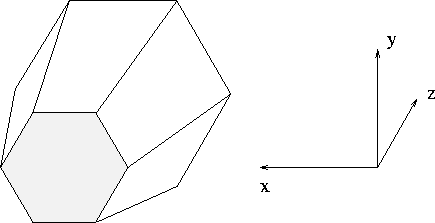



Next: Experimental Apparatus
Up: Tomography of Scintillators
Previous: Tomography of Scintillators
In order to calibrate the GEANT Monte Carlo simulation of
the PIBETA detector response, it
is necessary to account for the light output and position-dependent
nonuniformities
of each CsI crystal in the calorimeter. These quantities are
entered into the simulation as a smearing factor and a spatially
dependent weighting function in the crystal energy depositions.
This chapter discusses the experimental techniques used to measure the
light output and nonuniformities of the crystals, and the
results of the measurements.
The light output, expressed in terms of number of photoelectrons per MeV
deposited by minimum ionizing particles, can be measured by making use of
the fact that the photoelectron statistics follow a Poisson distribution.
Such a distribution is a limiting form of the binomial distribution

where p is the probability of success in a single trial, N is the
number of trials, and P(r) is the probability of r successes in
N trials. The Poisson distribution arises in the limiting case where
 and
and  , and takes the form
, and takes the form

where  is the mean. This distribution lends itself to the description
of photoelectron statistics because of the low probability for a charged
particle to interact with one scattering center, combined with the presence
of a large number of scattering centers inside one CsI crystal. In a
Poisson distribution, the standard deviation
is the mean. This distribution lends itself to the description
of photoelectron statistics because of the low probability for a charged
particle to interact with one scattering center, combined with the presence
of a large number of scattering centers inside one CsI crystal. In a
Poisson distribution, the standard deviation  is equal to
the square root of its mean. Consquently, if one represents the
light output in the CsI crystal as the number of photoelectrons per MeV
is equal to
the square root of its mean. Consquently, if one represents the
light output in the CsI crystal as the number of photoelectrons per MeV
 times the energy deposited by minimum ionizing particles E,
then one can deduce
times the energy deposited by minimum ionizing particles E,
then one can deduce

Using this relation, one can extract the number of photoelectrons per MeV
from the slope of a graph of sigma squared plotted against energy.
The light output nonuniformities are measured through the transmission
tomography of the CsI crystals, using high energy cosmic muons as the probe.
By determining the light output and muon trajectory length in the crystal,
one can calculate the spatial light output nonuniformity, normalized over
pathlength. This can be done in both the longitudinal and transverse
directions. These directions correspond to the z and x axes,
respectively, which are shown in Figure 3.1.

Figure 3.1: Geometry and coordinate system for a hexagonal
CsI crystal. The Z axis represents the longitudinal direction, and
the X axis represents the transverse direction.




Next: Experimental Apparatus
Up: Tomography of Scintillators
Previous: Tomography of Scintillators
Penny Slocum
Fri Apr 2 00:36:38 EST 1999
